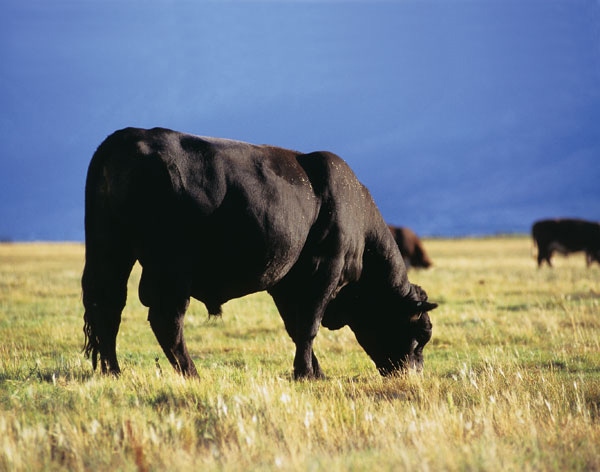A cowherd’s ability to maintain a high weaning rate with minimal supplementation of harvested feeds is a key contributor to a ranch’s overall sustainability.
January 26, 2017

In the coming months, many ranches will be buying bulls, making this a good time to reflect on how genetic selection impacts the beef industry’s sustainability.
Although, for good reason, the idea of sustainability has become a very popular topic, the understanding of how genetic selection contributes to sustainability remains largely overlooked. However, the genetic base of the U.S. cowherd might have one of the largest influences determining the overall sustainability of the beef industry. Here’s why.
1. The forage base of a ranch is the greatest sustainable resource of a ranching enterprise. Selecting cows that have the genetic basis to utilize forage efficiently, maintain body condition and rebred on a forage-based diet is one of the greatest contributors to the financial success of a ranch, and therefore sustainability.
A cowherd’s ability to maintain a high weaning rate with minimal supplementation of harvested feeds is a key contributor to a ranch’s overall sustainability, and requires selecting replacement heifers with the right genetics to accomplish this. Cows that don’t match their environment or aren’t able to graze efficiently are largely a result of buying the wrong type of bull, i.e. poor genetic selection.
2. Utilizing genetics that match a targeted market end point optimizes resources and minimizes waste. Trying to fit a square peg in a round hole is highly inefficient, wastes resources and is costly. Breeding (and managing) cattle that are genetically capable to reach a given target market end point is a fundamental starting point.
Not all cattle have the genetic ability to reach a Choice or better end point. So if your goal is the Choice market, it makes common sense to utilize genetics, in the form of the types of bulls a ranch buys, that allow that marketing possibility. Put another way, as an industry we should stop trying to turn cattle with Select genetics at best into Choice or Prime quality beef.
3. Feed efficiency is an area that the beef industry has been increasingly criticized for. In an era in which the world population will reach 9 billion by 2050, which means agriculture will have to produce more food every year than was produced in the last 4,000 years, we have no choice but to produce more with less.
Genetically selecting cattle that require less feed to produce a pound of beef is a key contributor to the beef industry’s overall sustainability. Even a slight decrease in the pounds of feed required to produce a pound of beef has a tremendous impact on the amount of feed required by the cattle industry, when spread across the millions of head of cattle fed in the U.S. every year.
4. Reproductive efficiency defined not only as the ability of a cow to produce a marketable calf every year, but also taking into consideration the resources a cow uses to produce that calf, will become increasingly important focus of sustainability.
Using genetic selection tools that already exist, such as $EN and RFV applied to grazing efficiency, would go a long way toward increasing the efficiency of the U.S. cowherd. If these underutilized genetic tools were more broadly used in the bull selection process, sustainability would increase dramatically.
5. Part of the answer to greater efficiency, which is the key to producing more with less, is selecting cattle with genetics that allow them to stay healthy. Morbidity and mortality is one of the greatest sources of lost efficiency, and therefore lower sustainability within the beef industry. Producing cattle that have the immunity and temperament to be efficient comes down to genetic selection.
Genetics is not commonly thought of as an area impacting sustainability, yet genetics is one of the key tools the industry has to make continuous improvement. In some cases, it is about better use of genetic tools already in place. In other cases, it’s about developing new genetic tools.
Either way, if the industry is to make the degree of continuous improvement that society increasingly expects, genetic selection decisions will also have to consider sustainability. And that starts with bull selection.
Bryan Weech is a consultant and adviser on sustainable agricultural projects. Contact him at [email protected].
About the Author(s)
You May Also Like



